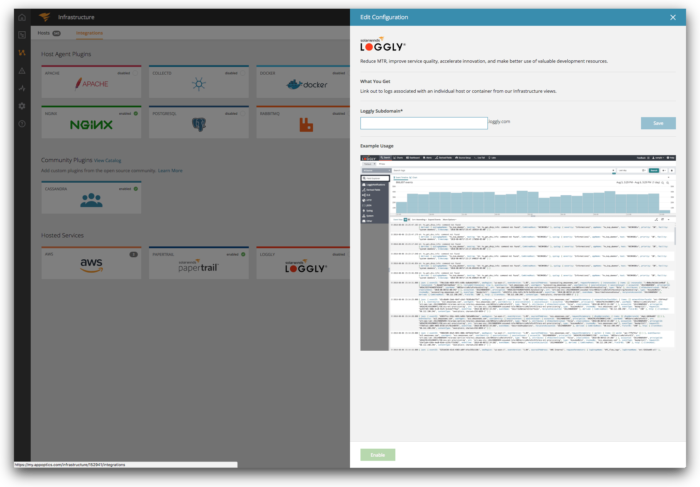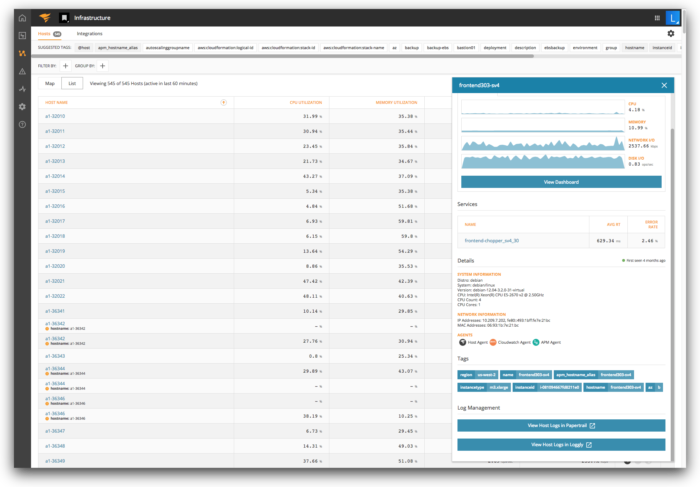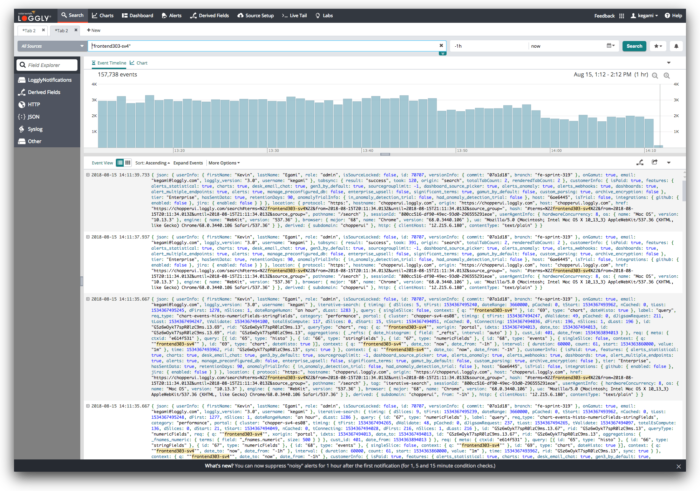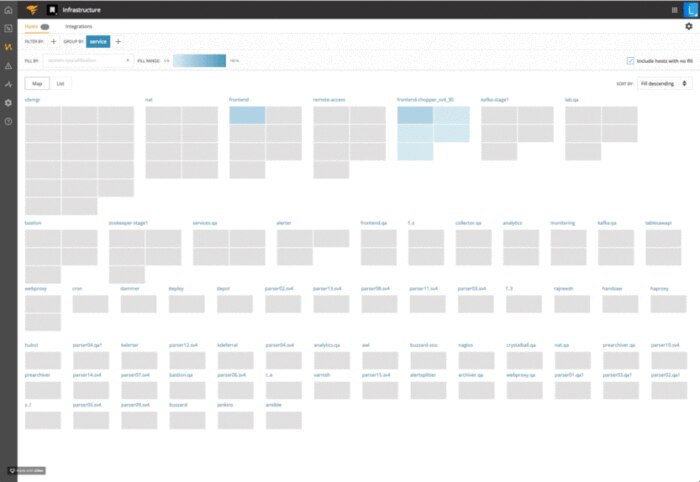Announcing AppOptics and Loggly Integration

Loggly® and AppOptics™ are both part of the SolarWinds® product suite, which is designed to provide deep visibility into your applications and infrastructure. AppOptics customers can now track a host directly from AppOptics to Loggly and see its logs.
This is handy when you’ve identified a host with high resource utilization or high error counts in AppOptics and want to find out what’s happening in that host’s logs.
How to Integrate Loggly with AppOptics
Get started by heading over to the Integrations page in AppOptics, and you’ll see Loggly listed under the Hosted Services section. A prerequisite is that you must be sending server logs to Loggly.
Click on the Loggly integration card to bring up the configuration panel. Add your Loggly subdomain and click Enable.

Once the Loggly integration is enabled, you’ll see a link to View the Host Logs in Loggly available on the Host Details card. Click it to open Loggly in a separate tab, and you’ll be able to see the logs from that host. Note: You might need to log into Loggly.

Now you can use Loggly to search the aggregated and parsed server logs to provide insight into what’s happening on that server.

Tracking in Action
Let’s say I instrumented my application services using AppOptics APM agents. Using the host map, I can visualize hosts running these services and use the service error counts metric to see which hosts are encountering errors. I can see there are a few hosts where a good number of errors have been detected.
I can open up the host’s card, check my system resource utilization for that host, and track that host’s logs by opening it up in Loggly.

With the AppOptics and Loggly integration, you can start to correlate APM metrics to infrastructure KPIs and track down into individual host logs. You can have easy and full observability into how your application is running on your infrastructure.
Go ahead and give it a try! Start your free 14-day trial of AppOptics.
The Loggly and SolarWinds trademarks, service marks, and logos are the exclusive property of SolarWinds Worldwide, LLC or its affiliates. All other trademarks are the property of their respective owners.

Susan Tacker

